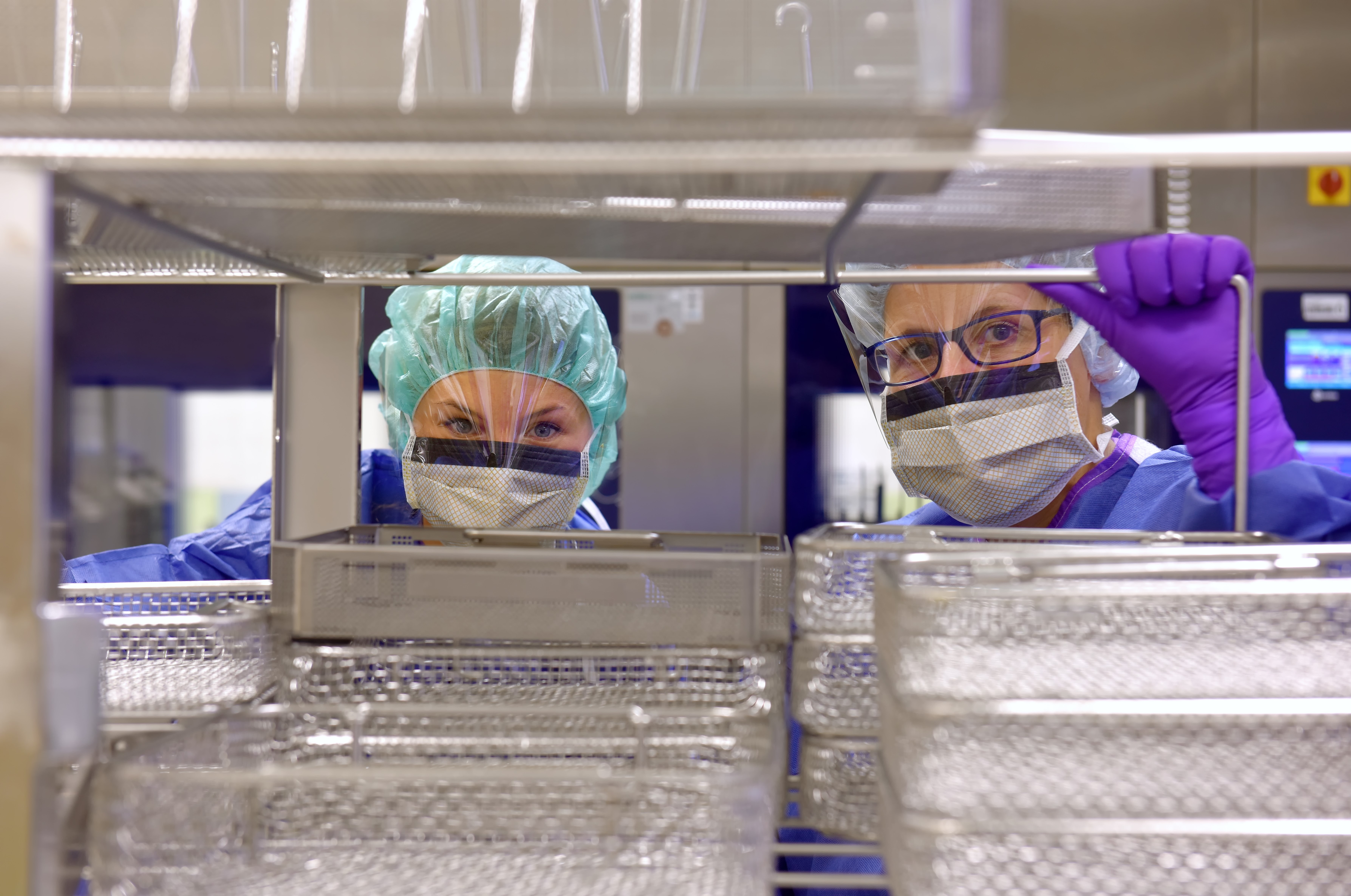Failure to follow the appropriate decontamination standards can result in increased infections, so we put together a list of five big decontamination recommendations for you based off AAMI ST79.
1. Temperature and Humidity Control (1)
Be sure to follow the ASHRAE guidelines in place when your facility was built. High temperatures and humidity are dangerous for SPD technicians working in fully compliant PPE. It also increases the likelihood of bacterial growth throughout the area if parameters aren’t maintained.
2. Wearing Proper PPE (2)
Contaminated instruments and other medical devices are sources of microorganisms to which personnel can expose through nicks, cuts, abrasions in the skin or contact with the mucous membranes of the eyes, nose, or mouth. Below is a list of the proper PPE to wear in the decontamination area:
- Fluid-resistant face masks and eye protection;
- Liquid-resistant covering with sleeves which is disposed or laundered after every use;
- Utility gloves that are fitted at the wrist, prevent contact of the wearer’s skin with contaminated water, and have cuffs that extend beyond the cuff of the gown;
- Liquid-resistant shoe covers if there is a potential for shoes to become contaminated and/or soaked with blood or other bodily fluids;
- All head and facial hair (except for eyebrows and eyelashes) should be completely covered.
3. Improper Mechanical Washer Loading (3-6)
Here are a few tips from AAMI on how to ensure you properly utilize your mechanical washers during the decontamination process:
- Monitoring and verification of cleaning processes should be completed per the IFU and documented;
- Filter retention plates should be separated to allow full contact with cleaning/disinfection solution;
- Process indicators, disposable labels, and disposable locks should be removed before cleaning of a rigid sterilization container;
- Silicone mats should be washed separately from instrument sets;
- Multi-level trays should be placed on the washer rack in a single level manner;
- Devices requiring disassembly prior to mechanical washing should be disassembled and cleaned according to the IFU;
- Hinged instruments should be placed on a decontamination stringer before being washed;
- All cannulated instruments should be brushed and flushed with a cleaning solution before going in the washer. Connect to irrigation ports if possible.
4. Daily Cleaning and Disinfection (7, 8)
Cleaning Decontamination daily, even when the area is not being used, should include:
- Having dedicated cleaning supplies only to be used in decontamination;
- Damp dusting of all horizontal work surfaces:
- Countertops and sinks,
- Furniture, shelving, and worktables,
- Ultrasonic cleaners and washers;
- Cleaning and disinfecting all work surfaces and high-touched objects using a low-linting cloth or single-use wipes,
- Mopping of floors with a single-use mop.
5. Maintaining Decontamination Equipment (9)
Maintaining decontamination equipment is vital to properly reprocessing instrumentation between patients. If you can’t be sure that your equipment is working correctly, how can you ensure that your instruments have been cleaned and/or disinfected?
- Follow manufacturer’s IFU for details on operation, proper loading, and cycle selection;
- Check the spray arms at least daily. If the arm isn’t turning, more than likely it’s clogged somewhere, which stops water and detergent flow;
- Clean the strainers at least daily;
- Schedule preventative maintenance regularly.
After a review of this information, take a look at your facility’s policies and procedures to find out if there are any gaps in decontamination. Is everyone complying with established policies? Perform random audits of sterile processing personnel to ascertain a level of understanding and help develop proficiency.
Author: Vanessa Cavanaugh, CRCST, CER
References:
- AAMI ST79 3.3.5.5
- AAMI ST79 4.5.2
- AAMI ST79 7.5.2.2.2
- AAMI ST79 7.5.2.2.5
- AAMI ST79 7.6.4.3.4
- AAMI ST79 7.4.1
- AAMI ST79 3.3.6.1.1
- AAMI ST79 14.2.3.3
- AAMI ST79 7.6.4.3.2


